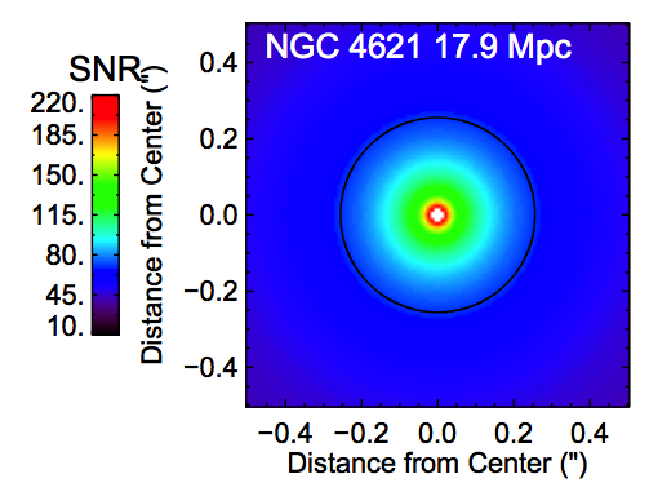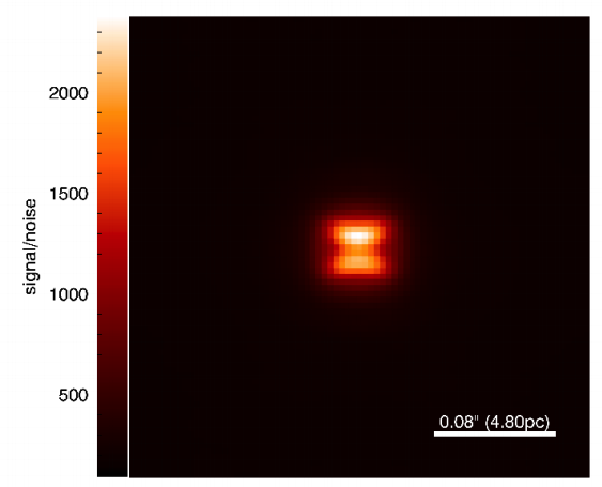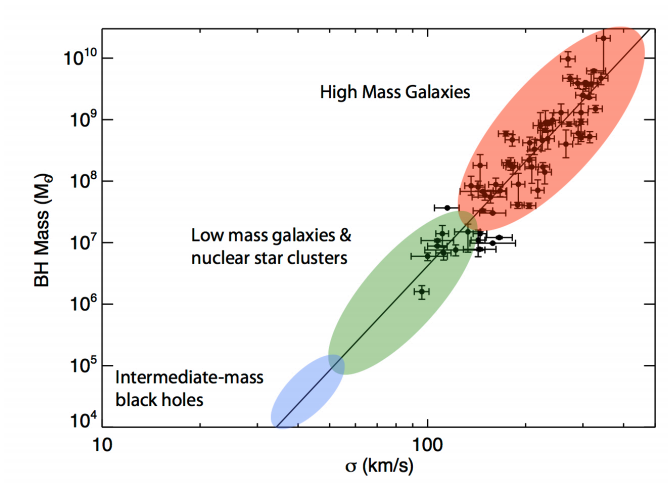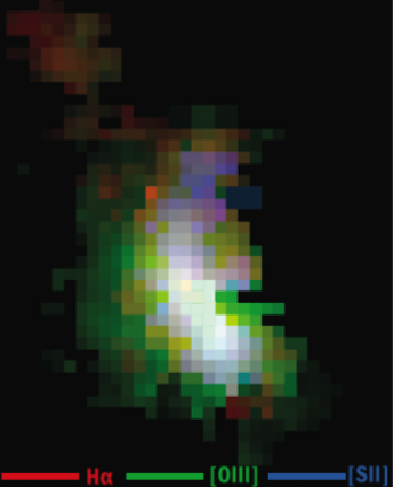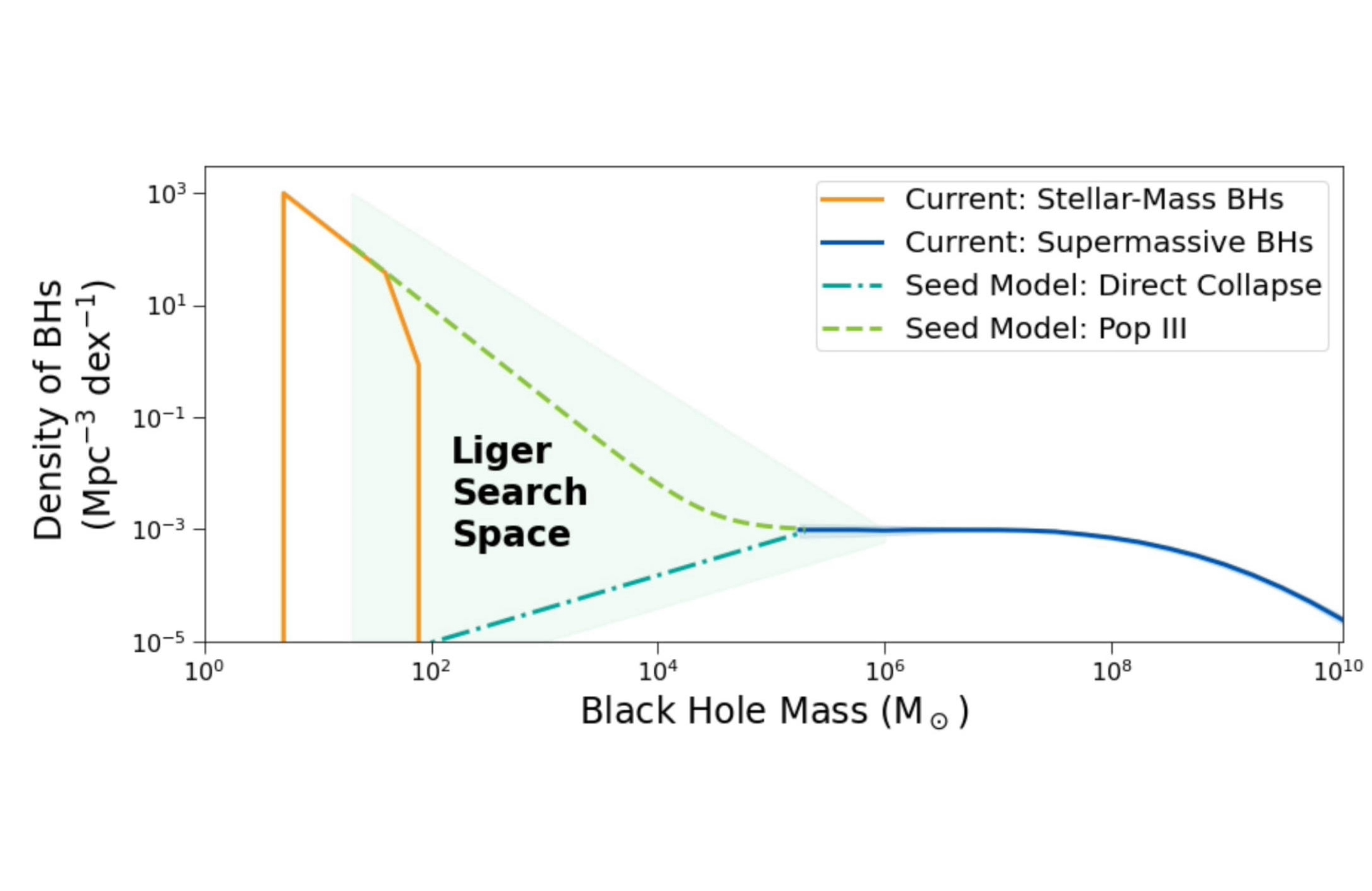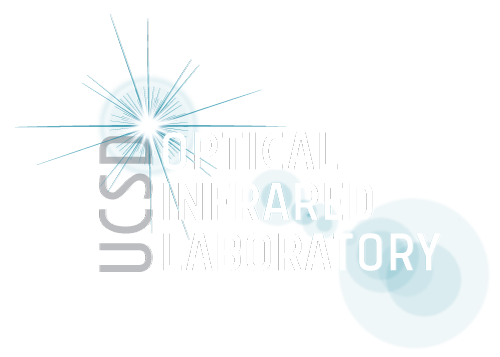Supermassive Black Holes
It is now well established that at the center of galaxies there resides a supermassive black hole (SMBH). One of the leading astrophysical questions is why SMBH masses are correlated with the mass and dynamics of its host galaxy. In the UCSD OIRlab group we use a variety of observational methods for exploring how supermassive black holes form and evolve with their host galaxies across cosmic time.
Our group has been studying the gas distribution and kinematics in host galaxies of luminous distant quasars - massively accreting supermassive black holes - using adaptive optics with integral field spectroscopy. We are particularly interested in understanding how quasar-driven outflows and shocks affect host galaxies' star formation and interstellar medium properties. Using AO with an IFS is essential for these studies since they provide a unique methods for removing the bright quasar light from the underlying faint galaxy, while also providing unprecedented resolution to study galactic properties at sub-kiloparsec scales.
Together with collaborators we are interested in improving methods for measuring accurate SMBH masses in nearby galaxies using AO observations to probe dynamics of the stellar/gas motions within the sphere of influence of the SMBH. We have also been actively developing science cases using the Thirty Meter Telescope that show with AO on an extremely large telescope will provide the most stringent measurements of black hole mass measurements in galaxies across cosmic time.
